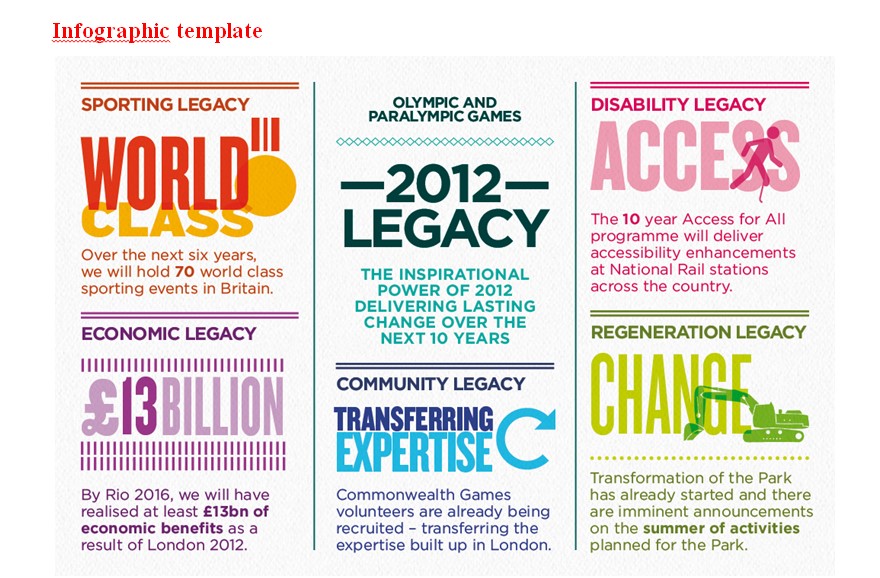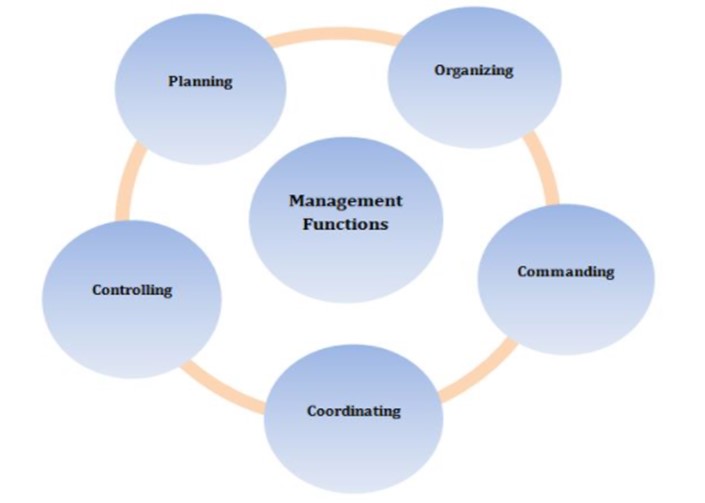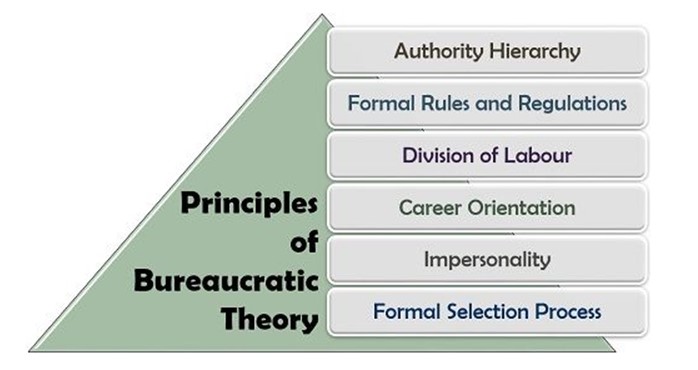Assignment Sample 7PJMN003W Programmer & Strategic Management
1.0 Introduction
1.1 Program Background
London was selected for hosting the 2012 Olympics in 2005 ahead of Moscow, Paris, New York, Madrid, and others (Azzali, 2017).http://7PJMN003W Programmer &Strategic Management A comprehensive legacy plan was attached with the execution of Olympic 2012. The Olympic committee highlighted their focus on the inclusion of an additional statement in their prime mission. The consideration of relational legacies was highly emphasized in this statement for hosting cities. The Olympic Games took place in London from 27 July to 12th August 2012. 26 sports events were considered for the Olympic program in London with the proactive engagement of around 10,500 athletes over the globe.
The combined budget for both London Olympics and the Paralympics was standing at £ 9.29 billion, which was later modified up to £ 8.77 billion (BBC, 2013). http://7PJMN003W Programmer &Strategic ManagementThis increase in savings resulted from the drop in policing and other respective security and transport expenses. The London 2012 Olympic Games were centered on the Olympic Park in East London. The first event of the London 2012 Olympics started with women’s football at the millennium stadium in Cardiff. Different legacy planning was also associated with London Olympics 2012 including the community and environmental welfare and others. With regards to this concern, distinctive scopes can be noticed behind London Olympics 2012 that are discussed in the adjoining paragraph.
1.2 Program scope
The scope of the program highlighted different community welfare strategies that had played a beneficial role to conceptualise the development of the host city. The UK government had also published a 10-point plan in terms of securing an everlasting legacy from the Olympics 2012. The topmost concern in this context highlighted the consideration of a youth sports strategy with adequate funding. £ 1.5 million was invested in disability sports in the UK (BBC, 2012). http://7PJMN003W Programmer &Strategic ManagementLondon Olympics 2012 has been also benefiting the communities living around the Olympic Park. The topmost concern, in this case, highlighted long-term game benefits in different respective areas including social inclusion and education, housing and community engagement, and others. The athletes’ village created during London Olympics 2012 has been an integral part of the community apartments where young people widely benefited from apprenticeship opportunities brought about through the games. The Olympic Development Agency played a significant role to transform the apartments created as Olympic villages into thousands of new homes by eradicating partitions (BBC, 2013).http://7PJMN003W Programmer &Strategic Management The entire project was to be completed in 2014. The temporary games venues where are also returned to their previous owners.
London Olympics also highlighted the scope of addressing the issue of unemployment in the UK. Some impressive statistics can be highlighted in this concern, which highlighted the creation of 110,000 more jobs since 2012 across the host boroughs (Olympics, 2021). http://7PJMN003W Programmer & Strategic ManagementOlympic park eventually became an attractive tourist spot with more than 1 million visits every year. The vision of the London Olympics 2012 can be recognized for creating the scope to benefit local people over the long term.
1.3 Strategic vision
The profound strategic rationale behind the consideration of the London Olympics 2012 highlighted the vision of developing community and environmental welfare. The consideration of employment opportunities highlights the strategic rationale for addressing unemployment across London. A future-looking framework was also retained during securing London’s appointment for the 2012 Olympic Games (Aecom, 2012). http://7PJMN003W Programmer &Strategic ManagementThis framework maintained a closed integration with multiple environmental and transport, design and planning, social issues, and others. However, the power of this idea can be determined by notifying the transformation concerning the areas of event urbanism and others.
Moreover, the inclusion of accountability for London as an attractive tourist spot was also hindered during the consideration of the Olympic Games 2012. It can be highlighted through the emergence of the Olympic park, which is also renowned as Queen Elizabeth Olympic Park (Aecom, 2012).http://7PJMN003W Programmer &Strategic Management From this viewpoint, the strategic rationale behind the London 2012 Olympics program can be evaluated in the form of generating both community welfare and economic contribution to the host city with increasing tourist attraction.
1.4 Different projects in the program
Different projects had been undertaken as an integral part of the London 2012 Olympics legacy program. The support of the community sports clubs played an important role to set out different projects. With regards to these mentioned attributes, the establishment of a sitting can be recognized from the 2012 Olympic Games regarding the welfare of the most significant urban regeneration projects ever undertaken in the UK.
On the other hand, a people play legacy program was also undertaken by Sport England with the intention to fund emerging facilities related to volunteering and participation programs. The School Games program was also introduced as another legacy program of the London Olympics 2012, which was sponsored by Sainsbury’s for boosting up the country and school sports festivals (BBC, 2012).http://7PJMN003W Programmer & Strategic Management The distinctive economic impact can also be recognized considering the arrangement of the Olympic Games in East London. Apart from the direct economic growth, around 40% growth was noticed across the local employment in the UK. More than 400 million GBP investments were done into the respective area considered for hosting the Olympic games 2012 which also highlighted community welfare and development (Olympics, 2020). http://7PJMN003W Programmer & Strategic ManagementThe acceleration of regeneration investment across east London was considered through London Olympics 2012. It can be highlighted with the vibrant innovation hub namely Here East which is situated at the site of the previous International broadcast center (Olympics, 2020). http://7PJMN003W Programmer & Strategic ManagementThis feature has been efficiently illustrating the ongoing benefits of education and employment growth as a result of the London Olympics 2012.
1.5 Program method
Prince 2 method had been undertaken during the consideration of the London Olympics 2012 (Goffee and Jones, 2012).http://7PJMN003W Programmer & Strategic Management Moreover, the Olympic badge scheme method was undertaken for increasing the overall event productivity concerning the mitigation of milestones that might provide financial rewards to the potential contractors. Preparation for the Olympic Games was based on a 2-4-1 timeline considering the overall program structure along with both external and internal communication. The overall planning considered 2 years where 4 years were undertaken for building and creating the infrastructure.
Infographic template

Figure 1: Infographic template
(Source: Flickr, 2012)
2. Management of London Olympics 2012
In terms of defining valuable management-related information from the London Olympics 2012, Henri Fayol’s administrative management theory has been undertaken.
Henri Fayol’s administrative management theory
Henri Fayol illustrated the management functions such as planning, organizing, control, command, and the concept of coordination. As argued by Edwards (2018), planning is one of the key aspects of a project and it is also important in order to bring the different departments in a business to function effectively. The tangible and intangible sources must be considered by the manager along with future events and trends. As mentioned by Beqiri et al. (2019), organization and command are also very important for a plan to be successful. In order to execute the plan in an effective manner, all the resources are provided by the organization and effective leadership needs to be shown in the command section. On the other hand, as counter-argued by Adam and Suleiman (2018), coordination plays the most important factor in organizational management in long term. Effective coordination ensures a smooth flow of work with proper bonding among the employees. The responsibilities of each employee must be clear to him or her and must work towards the goal with proper harmony. If there is a lack of coordination among the employees then it will break out in the future. The causes of lack of coordination include differences in opinions and lack of effective leadership from the managers. As stated by Edwards (2018), the last management functions involve control, which ensures the conformity of plans, instruction issued, and the establishment of the principles.

Figure 2: Five major functions of principles of management
(Source: Edwards, 2018)
In accordance with the administrative management theory, different attributes can be noticed concerning London Olympics 2012 management and structure that had played a significant role in efficiently completing the event with success. LOCOG was responsible for outlining the design along with the capacity and capability of the London 2012 Olympic Games. The “London 2012 Organising committee” included several senior associates of the company who were subsequently recruited for key positions such as functional heads and directors in the organizing committee. A senior core team was formulated as an integral part of developing the entire event management which included a Chief Executive Officer along with senior management in sport, a Finance Manager, a Bid Chairman, and others (Olympic, 2012).http://7PJMN003W Programmer &aStrategic Management
2.1 3-tier analysis
Enabler
The management structure was developed by taking into account different functional areas. This includes human resource management, venue, and infrastructure management, communication management, commercial and finance management, and others. A new governance structure was undertaken by LOCOG to efficiently direct the London Olympic games in 2012. The consideration of flexible operational structure helped to lead the management to direct decision-making concerns in front of the directors and managers. These aspects highlight the unity of direction along with discipline, division of work in different functional areas, authority and responsibility, unity of command, and others for the London Olympics 2012 (Olympic, 2012).http://7PJMN003W Programmer & Strategic Management
On the other hand, an internal audit was also considered for this event operated by LOCOG. A miniature in-house team was supplemented with the intention to conceptualize a transparent and fair internal audit program. The audit report was provided to the chief financial officer along with the audit committee of the board. With regards to the overall understanding, a subsequent set of principles can be notified from the perspective of the London Olympics 2012 as outlined in the administrative management theory (Tasie, 2017).http://7PJMN003W Programmer & Strategic Management
Objectives
The prime objective of the London Olympics 2012 legacy program was to ensure extended community development and improvement that might add a greater value to the economic growth of the UK. Another secondary objective of enlarging the tourist attraction of London can also be recognized in this concern.
Benefits
The topmost concern, in this case, highlighted different structured targets undertaken by the UK’s Olympics legacy ambassador LOCOG. Based on this understanding, the UK Government paid attention to including different legacy initiatives that might play a significant role to empower the accountability of London and the UK from a global perspective. £ 125 million per year funding was recognized for Elis sports over the next four years. Around £ 300 million investment was done behind the emergence of the “Queen Elizabeth Olympic Park” which was open to the community also (BBC, 2012).http://7PJMN003W Programmer &Strategic Management Government support was also provided for joining in programs regarding the creation of the spirit of volunteering. Rapid funding was also considered in the form of the UK international sports development program.
3. Analysis
3.1 Literature
In terms of providing valuable literature related to this topic, Max Weber’s bureaucratic management theory has been undertaken.
Max Weber’s bureaucratic management theory
The theory of bureaucracy is analyzed by Max Weber, which highlights the structure of an organization. As mentioned by Dyck (2017), there are various rules, procedures, standardized processes, desk numbers, meticulous labor division, and hierarchies. This type of management structure proves to be the ideal one for large organizations with a huge set of employees. As argued by Netelenbos (2020), promotion, as well as selection in this bureaucratic management, occurs only on the basis of technical qualifications. The efficiency of the company is improved in the prices along with the financial effectiveness. There are six unique characteristics of this management structure, which include Hierarchical authority layers, Formal selection, requirements and rules, career orientation, task speculation, and impersonation. As stated by Netelenbos (2020), the success of a company is decided by the extent to which they follow the rules. The task is divided among the different sets of professionals in a company using the task specialization principle. Each person gets his or her task according to the skill set. The other hierarchies ensure a smooth layer of management positions in the company. It starts with the CEO and ends with lower workers with different management positions such as junior management, assistant manager, and senior manager to assure effective control over the functions (Baker, 2021).http://7PJMN003W Programmer & Strategic Management Formal selection ensures an unbiased mode of selection and on the other hand, effective rules and regulations are also maintained in the company using this principle. On the other hand, personalization ensures that there is no development of nepotism in the company and each employee will operate on their basis of skill.

Figure 3: Principles of bureaucratic theory by Max Weber
(Source: Netelenbos, 2020)
Governance and leadership
Based on the theoretical interpretation of the bureaucratic management theory, a profound hierarchical structure can be reflected from the perspective of the London Olympics 2012 event management. The prime responsibility was kept upon LOCOG for efficiently guiding the overall event and its respective literacy program. However, consistent rules and regulations are also applied by this committee as an integral part of efficiently proceeding with London Olympics operations. For evidence, it can be stated that time management for games along with required cash flow was efficiently managed by LOCOG under the lights of a considerable overdraft facility negotiated with a commercial bank during the bidding stage (Olympic, 2012).http://7PJMN003W Programmer & Strategic Management Even the hierarchical structure within LOCOG had efficiently been helpful for building a supportive team full of skilled workers. The engagement of respective contractors and volunteers was also considered by LOCOG leaders with the determination of profound workforce planning and operations. In terms of managing the administrative and transactional side of the whole HR department, HR shared service was implemented.
These aspects define an extended hierarchical structure with clear rules of governance counting in a chain of command and a clear dissection of labor concerning the London Olympics 2012.
Integration and change
A highly robust legal department was formulated within the management structure of LOCOG. Joint venture conformity was created during the city was bid for Olympic games considering the UK government department of culture, sport, and media, the British Olympic Association, the Greater London Authority, and others (Olympic, 2012).http://7PJMN003W Programmer &Strategic Management The standard corporate model was followed in order to efficiently outline the organizational structure of LOCOG.
Benefit analysis
The program deliverables highlight distinctive community welfare and development with the consideration of increasing tourist attraction. Moreover, economic contribution under the shape of addressing unemployment issues and ensuring financial growth highlights positive program deliverables from the perspective of considering host city development.
Conclusion
The oval report has signified different attributes related to the management of the London Olympics 2012. The scope of the program has highlighted extended community welfare and development that has been supportive to increase the economic contribution by increasing tourist attraction across London. However, the future-looking framework undertaken by the UK Government has also highlighted the strategic rationale of empowering the development of the host city. In this regard, the development of Queen Elizabeth Olympic Park and others can be recognized. Other respective legacy projects such as the people play legacy program, school games program, and others have been supportive of community and people’s welfare apart from addressing unemployment problems.
Supporting the Henri Fayol administrative management theory and Max Weber bureaucracy management theory, an extended focus can be assumed towards systematic maintenance of administrative perspectives for the London Olympics 2012. Consideration of London 2012 Organising Committee, LOCOG, maintenance of a hierarchical structure, and others define the unity of command along with the authority and responsibility for the event completion. Respective financial responsibility is also highlighted in this report by considering proactive engagement with a commercial bank regarding significant overdraft facilities. Thus, a profound systematic operation can be noticed from the perspective of the London Olympics 2012 legacy programs.
References
Adam, A.K. and Suleiman, E.S., 2018. A Contextual Framework of Henry Fayol’s 14 Principles of Management for Public Sector Efficiency and Effectiveness of Policy Responsibilities by a Government. Journal of Advanced Research in Business and Management Studies, 11(1), pp.46-61.
Aecom, 2012. London, United Kingdom [Online]. Available at: <https://aecom.com/projects/london-2012/> [Accessed 4 November 2021]
Azzali, S., 2017. Queen Elizabeth Olympic Park: an assessment of the 2012 London Games Legacies. [Online]. Available at: <https://cityterritoryarchitecture.springeropen.com/articles/10.1186/s40410-017-0066-0> [Accessed 4 November 2021]
Baker, E., 2021. The Rise of Entrepreneurial Management Theory in the United States. Modern Intellectual History, pp.1-25.
BBC, 2012. London 2012 legacy plan published. [Online]. Available at: <https://www.bbc.com/news/uk-politics-19638262> [Accessed 4 November 2021]
BBC, 2013. London 2012: Olympics and Paralympics £528m under budget. [Online]. Available at: <https://www.bbc.com/sport/olympics/20041426> [Accessed 4 November 2021]
Beqiri, T., Dauti, M.B. and Mazreku, I., 2019. IMPORTANCE OF CONTEMPORARY MANAGEMENT THEORIES IN MANAGING EMPLOYEES. Knowledge International Journal, 35(5), pp.1801-1805.
Dyck, B., 2017. Spirituality, virtue, and management: theory and evidence. Handbook of Virtue Ethics in Business and Management. Edited by Alego JG Sison, Gregory Beabout and Ignacio Ferrero. Dordrecht: Springer, pp.919-28.
Edwards, R., 2018. An elaboration of the administrative theory of the 14 principles of management by Henri Fayol. International journal for empirical education and Research, 1(1), pp.41-51.
Flickr, 2012. London 2012 Olympic and Paralympic legacy graphic [Online]. Available at: <https://www.flickr.com/photos/thedcms/8419540554> [Accessed 5 November 2021]
Goffee, R. and Jones, G., 2012. Agile Problem-Solving at the London Olympics. [Online]. Available at: <https://hbr.org/2012/08/agile-problem-solving-at-the-london-olympics> [Accessed 4 November 2021]
Netelenbos, B., 2020. Bringing back Max Weber into Network Governance Research. Critical Policy Studies, 14(1), pp.67-85.
Olympic, 2012. London 2012 Volume 3 Olympic Games Official Repo [Online]. Available at: <https://stillmed.olympic.org/Documents/Reports/Official%20Past%20Games%20Reports/Summer/2012/ENG/2012-RO-S-London_V3_eng.pdf> [Accessed 4 November 2021]
Olympics, 2020. Here East: How the Olympic Games London 2012 created new opportunities for a community. [Online]. Available at: <https://olympics.com/ioc/news/here-east-how-the-olympic-games-london-2012-created-new-opportunities-for-a-community> [Accessed 4 November 2021]
Olympics, 2021. London 2012: a legacy that keeps giving [Online]. Available at: <https://olympics.com/ioc/news/london-2012-a-legacy-that-keeps-giving> [Accessed 4 November 2021]
Tasie, G., 2017. A Review of the Role of Management as an Integrating Activity using Henry Fayol Fourteen Principles. Advances in Social Sciences Research Journal, 4(22).


